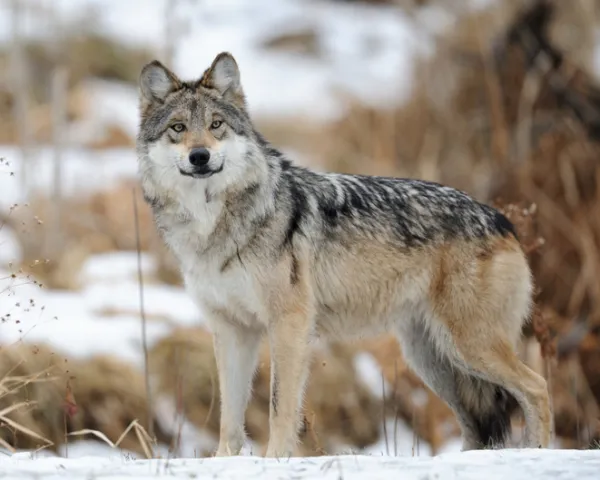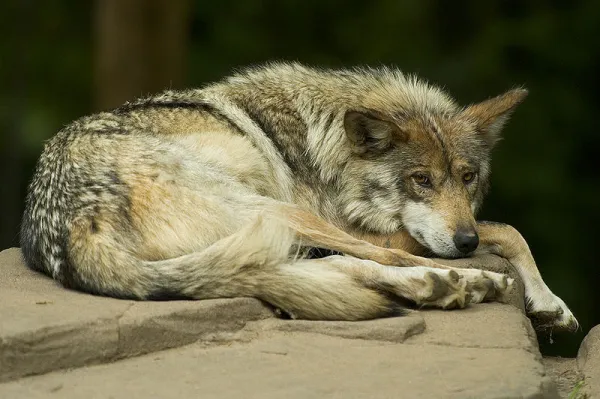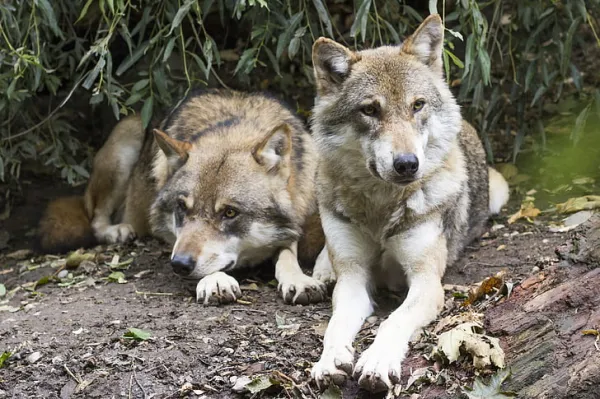The Mexican gray wolf is the smallest and southernmost subspecies of the gray wolf in North America. As a high-level predator, it helps keep prey populations balanced and ecosystems healthy—yet it suffered a dramatic decline in the 20th century due to human actions. This guide explains its traits and ecology, the drivers of endangerment, current conservation measures, and what people can do to help.

Note: Population figures in this article reflect reported counts from the sources summarized in your text and may change with new annual surveys.
Species snapshot & physical traits
Historic range & habitat
Social structure & behavior
Why the Mexican gray wolf is endangered (core causes)
Conservation status & key measures
How the public can help
FAQs & quick takeaways
Scientific name: Canis lupus baileyi (Mexican gray wolf)
Taxonomy: Family Canidae → Genus Canis → Gray wolf subspecies
Size: Generally under 1.5 m total length (head–body + tail), making it the smallest gray wolf subspecies in North America.
Coat: Despite the name “gray,” coats often blend yellow-brown, gray-brown, and charcoal tones; dorsal fur tends to be darker.
Diet: Carnivorous, feeding on wild ungulates and mid-sized mammals; will opportunistically take smaller vertebrates and carrion.
Ecological role: A high-level predator that helps regulate herbivore numbers and behavior, preventing overgrazing and supporting vegetation and habitats.
Historic distribution:
Southwestern USA: Arizona, Texas, and the Sonoran Desert region;
Mexico: Especially Chihuahua (north) and extending into central and southern montane forests.
Habitats:
Temperate arid to semi-arid ecosystems (desert and shrubland);
Montane forests (pine, mixed conifer, and oak woodlands).
Historically the subspecies occupied a large, continuous range. Today, suitable habitat is far more fragmented and reduced.

Pack living: Typically fewer than 12 individuals—an alpha pair, other adults, yearlings, and pups.
Breeding: Usually one litter per year; breeding is concentrated in the alpha pair. Gestation lasts ~2 months; all pack members help rear pups.
Territory: Marked with scat and urine; packs cooperate in patrols and hunting to reduce energy costs.
Activity: Primarily nocturnal, with crepuscular peaks.
Prey: Wild sheep, rabbits, rodents, deer, wild pigs, and other available wildlife; conflict risk rises when wild prey declines.
In the 20th century, indiscriminate hunting and poisoning by private actors and authorities nearly eliminated wild populations. Root causes included:
Loss of wild prey (poaching and habitat fragmentation/degradation);
Wolves turning to livestock when natural prey dwindled, sparking retaliation.
By 1976 the subspecies was formally listed as threatened/endangered, with wild populations essentially extirpated.
With only a small founder base remaining in captivity, genetic diversity is limited. Consequences include:
Higher expression of recessive genetic disorders and reduced fertility;
Lower adaptive potential to disease, climate variation, and environmental stress.
Reported numbers (from your source text):
~520 total individuals, including ~390 in captivity (Mexico + USA);
~100 wild in the USA; ~30 wild in Mexico.
Reminder: These counts are periodically updated by authorities and partners.
Milestones:
1970s: Mexico and the USA launched a captive-breeding & reintroduction program.
2014: First wild-born pup recorded after reintroduction—an important sign of progress.
Priority actions (ongoing or recommended):
Public education: Counter myths about wolves; explain their ecosystem value.
Law & enforcement: Enforce anti-poaching and protective regulations for wolves and their prey (e.g., deer), so wolves are less likely to turn to livestock.
Habitat conservation & connectivity: Protect key breeding areas and ecological corridors to reduce fragmentation.
Captive breeding & genetic management: Shared studbooks and coordinated pairings across institutions to lower inbreeding coefficients; soft-release protocols to boost survival.
Non-lethal conflict mitigation for coexistence with ranching:
Better husbandry: improved fencing, night enclosures, carcass removal;
Livestock-guarding dogs, fladry (flagged lines), lights/sound deterrents;
Range riders (field patrols/interventions) and compensation/insurance schemes to reduce incentives for lethal control.
Support credible conservation groups (donations, volunteering for monitoring, education, and community programs).
Choose wildlife-friendly products (ranches participating in conflict-mitigation and compensation programs).
Share accurate information in schools, communities, and social media to reduce fear and misinformation.
Practice responsible nature tourism: no feeding or disturbance; choose licensed eco-tours that benefit local communities and conservation.

Do Mexican gray wolves attack people?
Healthy wild wolves generally avoid humans. Most issues involve livestock, and non-lethal measures can greatly reduce conflict.
Why prioritize wolves—won’t that hurt ranchers?
Top predators stabilize ecosystems (e.g., limiting overbrowsing), which benefits landscapes and water systems. With compensation, insurance, and non-lethal tools, both biodiversity and livelihoods can be protected.
Can inbreeding be fixed?
It can be mitigated through coordinated studbook management, genetically informed pairings, and expanding the effective population via successful reintroductions.
How is this subspecies different from other gray wolves?
It’s smaller, often warmer-toned in color, and adapted to arid/semi-arid and montane forest environments at the southern edge of the gray wolf’s historical North American range.
The Mexican gray wolf became endangered due to persecution tied to livestock conflicts and low genetic diversity.
Captive breeding + strategic releases and a toolkit of non-lethal coexistence methods underpin current recovery.
The public can help through supporting conservation groups, informed consumption, and science-based outreach.
Population figures change over time—always refer to the latest official counts.
Bibliography
Michelle Carrere. The return of the gray wolf to Mexican soil could bring back the rains. Mongabay LATAM Independent Environmental Journalism. June 5, 2019.
animal tags: Mexican gray wolf
We created this article in conjunction with AI technology, then made sure it was fact-checked and edited by a Animals Top editor.